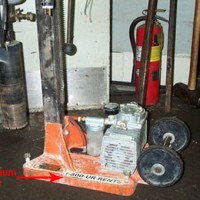The safety hierarchy is a well-established principle among safety professionals. It’s a reliable and widely accepted method to minimize or eliminate exposure to hazards in products and workplaces.
The Safety Hierarchy
The hierarchy begins with the most effective option: elimination of the hazard. Where a hazard exists it should be eliminated by design, if possible. The next most effective option is providing safeguards. If the hazard cannot be eliminated from the design without impairing product function, safeguards must be provided to reduce the risk of injury to an acceptable level if it is feasible to do so. If hazard elimination or safeguards are not possible, hazard warnings must be provided for anyone subjected to the known risk. The last safety resort is also the least effective: policies and procedures to minimize the risk of the hazard.
Prudent engineering practices include a hazard evaluation in the design phase of a product. In many cases, this evaluation reveals design flaws and problems that may be hazardous. If a hazard is revealed, alternative designs can be explored to eliminate or restrict the risk.
The Hierarchy in Practice
In many investigations, we investigate equipment to determine if a defect in the machinery caused injury. That was the case when we investigated the injury of a man working with a rented core drill. The drill, which is used to remove cores from concrete, secures the machine’s base to the work surface during operation by a vacuum assembly. The drill motor is moved up or down by the operator with an operating lever to advance or retract the bit. The drill is equipped with an ammeter to assist the operator in judging the amount of pressure to apply to the operating lever.
In this case, a supervisor showed the employee, who had no previous experience operating a core drill, how to use the equipment and then left the area. The employee put his foot on the drill to stabilize it and began to drill. Within a few minutes, the base broke loose, the drill bit disengaged and the machine was airborne. The drill injured the employee as it spun uncontrolled. The machine eventually stopped after the power cord was ripped off.
Safety Analysis
Our analysis isolated a critical fact that cascaded into a series of serious issues. If the core drill’s vacuum base fails, the machine will detach from the work surface — an uncontrolled hazard with an unacceptable level of risk. With the known hazard, safeguards should have been incorporated if technologically and economically feasible. In our analysis of the core drill we offered three design alternatives that could have controlled the risk to an acceptable level — all of which were technologically and economically feasible. One of the designs was installed and successfully tested.
Further, the manufacturer and rental company could have foreseen that an untrained worker might be asked to use the drill. In addition to the uncontrolled hazard and lack of safeguards, no visible or meaningful warnings were provided to the worker. The warnings on the drill were very general and did not adequately describe the hazard. Furthermore, the warnings state that a user should be familiar with the operator’s manual, but none was provided with the machine; nor does the equipment include a place where the manual can be stored and accessed.
Engineering Safety
Manufacturers have a responsibility to include a hazards evaluation in the design phase of any product. If hazards are discovered and cannot be eliminated, it is due diligence to reduce the risk of injury to an acceptable level through safeguards. If the manufacturer of the core drill had applied the safety hierarchy principle during the design of the core drill, many aspects of this case might have been very different than the situation we investigated. With proper safety measures included and applied, the incident we investigated might have never occurred.
Founded in 1997, The Warren Group, forensic engineers and consultants provides technical investigations and analysis of personal injury and property claims as well as expert testimony for insurance adjusters and attorneys. Extremely well versed in the disciplines of mechanical, electrical, chemical, structural, accident reconstruction and fire and explosion investigation, our engineers and consultants are known for delivering the truth — origin, cause, responsibility and cost of an event or claim — with unmistakable clarity.





